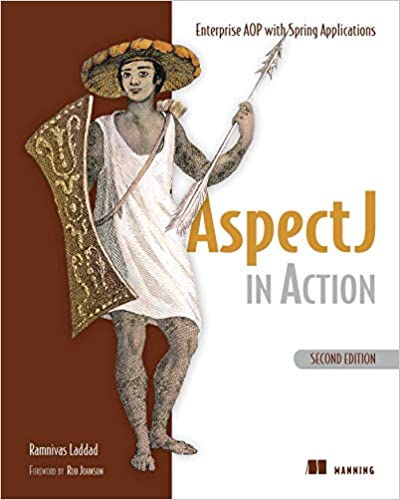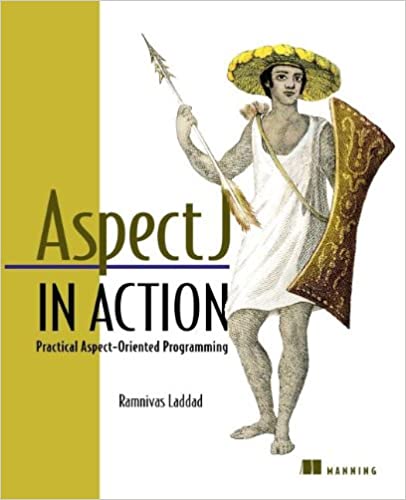Books
Articles and Select External Blogs
Spring Cloud blogs
Cloud Foundry blogs
- Using Cloud Foundry Services with Spring: Part 1 - The Basics
- Using Cloud Foundry Services with Spring: Part 2 - Auto-reconfiguration
AOP myths and realities: Beyond hype and misunderstandings (February 2006)
Like any new and exciting technology, AOP has generated its fair share of buzz, and also its fair share of myths and misunderstandings. After following AOP coverage on the Web and listening to the questions asked at conferences, I started to see some common themes (or myths) that deserve to be cleared up.
AOP and metadata: A perfect match (March 2005)
Metadata is a way to express additional information about program elements. The new metadata facility in the Java programming language enables the use of typed annotations. Using metadata is quite simple, although consuming it brings up many choices. Aspect-oriented programming presents itself as a principled consumer of metadata. The join point model augmented with metadata makes AOP accessible by facilitating simpler pointcuts for crosscutting concerns that would not be so easily specified by stable signature-based pointcuts.
Part 1 - Concepts and constructs of metadata-fortified AOP
Part 2 - Multidimensional interfaces with metadata
Zen and the Art of Aspect-Oriented Programming (April 2004)
As enterprise systems evolve from concept to code, an otherwise clean design can become downright, well, messy, as the practical plumbing of logging, caching, transactions, and more infiltrates modules. Wouldn't it be better if, say, logging were just another module? Enter aspect-oriented programming.
Aspect oriented refactoring series. TheServerSide.com (December 2003)
Refactoring, a process and a set of techniques to reorganize code while preserving the external behavior, has gained popularity due to its practical value in creating agile code. Recently, aspect-oriented programming (AOP) has received increased attention due to its power in encapsulating crosscutting concerns in a system through use of a new unit of modularity called an aspect. Aspect-oriented refactoring (AO refactoring) synergistically combines these two techniques to refactor crosscutting elements. In this two-part series, we will examine the fundamentals of AO refactoring, the steps involved in the process, and a few common techniques.
Part 1 - Overview and Process
Part 2 - The Techniques of the Trade
Aspect-oriented programming will improve quality. IEEE Software (November 2003)
Software engineers are always looking for ways to improve modularity in software. Recently, aspect-oriented programming emerged as a new modularity technique that aims to cleanly separate the implementation of crosscutting concerns(requirements and design elements that affect multiple modules). Several characteristics of AOP work together to improve software quality.
I want my AOP! series. JavaWorld (January-April 2002)
Most software systems consist of several concerns that crosscut multiple modules. Object-oriented techniques for implementing such concerns result in systems that are invasive to implement, tough to understand, and difficult to evolve. The new aspect-oriented programming (AOP) methodology facilitates modularization of crosscutting concerns. Using AOP, you can create implementations that are easier to design, understand, and maintain. Further, AOP promises higher productivity, improved quality, and better ability to implement newer features. This article, the first in a three-part series, introduces the AOP concept and the problems it attempts to solve.
Part 1 - Separate software concerns with aspect-oriented programming
Part 2 - Learn AspectJ to better understand aspect-oriented programming
Part 3 - Use AspectJ to modularize crosscutting concerns in real-world problems
Simplify your logging with AspectJ. Developer.com
AspectJ simplifies the logging task by modularizing its implementation and obviating the need to change many source files when requirements change. AspectJ not only saves a ton of code, but also establishes centralized control, consistency, and efficiency. Implementing logging with AspectJ--a safe and relatively simple task--is a good way to learn AOP and AspectJ and to introduce it into your organization. The next time you encounter some unexpected problem that occurs infrequently, you can use AspectJ-based logging to easily monitor the operation log and isolate the problem. Once the problem is fixed, you can just as easily remove logging. In this article, we demonstrate how you'd use AspectJ in implementing logging. The solution presented here builds on the standard logging APIs.
XML APIs for databases. JavaWorld (January 2000)
Most Web applications require the presentation of database-generated information. XML, because of its ability to separate content from presentation, is fast becoming an industry standard for data exchange. Most XML tools work with either the SAX or DOM API. This article presents a way to blend the power of a database with the features of XML. It also provides a simple, pure Java implementation of XML APIs for databases that works with any JDBC data source. With this approach, XML tools can treat a database as a virtual XML document.
Scripting power saves the day for your Java apps. JavaWorld (October 1999)
Adding support for user-defined scripting to software tools greatly enhances their usability, resulting in higher user satisfaction. With the scripting facility, tool users can customize the tool to suit their needs, ease their routine tasks, and extend added functionality beyond the level intended by the tool vendor. This article presents a way to add scripting support to Java applications and provides required drivers for four scripting languages: JavaScript, Python, Tcl, and Scheme. It also presents a framework that enables support for new scripting languages without any changes to the core application. Finally, it shows how to add scripting support to those Java applications designed without consideration for scripting extensions.
Use nested classes for better organization. JavaWorld (August 1999)
Top-level nested classes (static inner classes) act like top-level classes except they use the enclosing class as a namespace. This tip suggests designing supporting classes as top-level nested classes inside the primary class. This approach makes the coupling between the primary and the supporting classes clear and leads to an implementation that is easier to understand, use, and maintain.
Using Publish-Subscribe for Smart, Interactive Device Communications
Using Publish-Subscribe for Smart, Interactive Device Communications, Ramnivas Laddad, Gerardo Pardo-Castellote, Stan Schneider, Internet Device Builder Conference (July 1999)
The publish-subscribe model is the premier method for disseminating information in complex distributed applications. Publish-subscribe middleware takes care of all the network programming and message passing chores, dramatically simplifying application development for enterprise and internet applications. Smart, interactive devices in distributed, real-time applications also benefit from the simple publish-subscribe programming model. However, most commercial middleware is targeted at desktop applications, and thus does not meet real-time application requirements for determinism, fault tolerance, robustness and data delivery control. This paper explores the different kinds of data flow found in smart interactive devices. It then examines the architectural advantages and limitations of the publish-subscribe model, and introduces extensions that can make publish-subscribe practical for distributed real-time applications. Finally, we propose extensions to the Java Messaging Service (JMS) API to make JMS appropriate for real-time applications.
Faster and Better Training of Multi-Layer Perceptron for Forecasting Problems
Faster and Better Training of Multi-Layer Perceptron for Forecasting Problems, R. R. Laddad, U. B. Desai and P. G. Poonacha, in Neural Network and Signal Processing IV, Proceedings of the 1994 IEEE Workshop, Ermioni, Greece (September 94)
New methods for training multi-layer perceptron network for forecasting problems are presented. The first method exploits spectral characteristics of time series to get faster learning and improved prediction accuracy. A neural network scheme for real time implementation of this method is also presented. The second method suggests the use of two new weight initialization schemes which give very fast convergence besides giving better prediction. The foreign exchange time series is used to illustrate the efficacy of the proposed methods.

